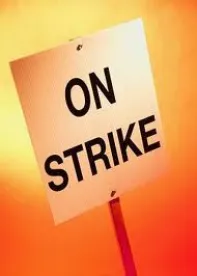Employers in New York, the second-most unionized state in the country, have lost another key point of leverage in collective bargaining. Effective February 6, 2020, Senate Bill 7310 reduces the amount of time striking workers in the private sector must wait before they are eligible to receive unemployment benefits. While New York is one of only a handful of states to allow strikers to receive unemployment benefits,[1] the seven week waiting period that has applied until now, has served as a deterrent to strikes. The new, shorter waiting time has the potential to profoundly affect the calculus and reduce employers’ economic leverage in collective bargaining because earlier access to unemployment benefits will soften the blow that a strike has on an employee’s financial well-being and potentially increase the willingness of unions and employees to strike.
Access to Unemployment Benefits While Striking in New York
The Supreme Court has long held that the National Labor Relations Act does not preempt a state’s ability to determine whether unemployment benefits are available for employees engaged in a labor dispute. As unemployment benefits are generally available only to those workers who are ready willing and able to work, employers might reasonably expect that workers who voluntarily withhold their labor in a strike would not be eligible for such benefits. While most states appear to agree and do not permit employees who are on strike to collect unemployment insurance benefits, New York remains an outlier.
Historically, striking employees in New York had to wait seven weeks before they could file for unemployment benefits, unless there was a lockout or the employer hired replacement workers. This waiting period meant that striking workers could not receive their first benefit check until the ninth week of the work stoppage. The purpose of the delay in benefits was to prevent the state from inserting itself prematurely into a private-sector labor dispute and to “avoid the imputation that a strike may be financed through unemployment insurance benefits.” Matter of Burger, 277 App. Div. 234 (1950). This thoughtful counter-balance reduced the risk of frivolous strikes and work stoppages, while providing an eventual safety net for those rare instances where a labor dispute suffered a long impasse.
Reducing the Waiting Period
Under New York’s amended law, the amount of time that striking workers must wait before receiving unemployment benefits is reduced from seven weeks to two weeks. This law modifies a previously adopted bill that would have required workers to wait just one week after the start of the strike to be eligible to receive unemployment benefits. Had the legislature not amended the 2019 bill, for the purposes of unemployment benefits in New York, striking workers would have been treated similarly to those employees who became jobless involuntarily.
A New Calculus for New York Employers
A reduction in the waiting period for unemployment benefits potentially changes the dynamics in collective bargaining by reducing the incentive for unions and workers to avoid strikes and the economic hardship on those who strike and increasing the pressure on employers to concede to union demands to avoid strikes. Over the last two years there has been a recent upsurge in major strike activity. With unemployment benefits now available sooner, unions may be more willing to initiate or prolong a strike to improve their bargaining position. New York employers should be wary of how this shift in the costs of striking could affect future labor negotiations and update their existing strategies accordingly.
[1] The list of states permitting striking workers to receive unemployment benefits is short. In 2018, New Jersey passed a bill permitting striking workers to begin collecting unemployment benefits 30 days after the start of a strike. Other states, such as Georgia, New Hampshire, Rhode Island, West Virginia, provide benefits if unemployment continues after the labor dispute ends, so long as the worker did not participate in the strike and are not a member of the union involved in the labor dispute.





 />i
/>i

